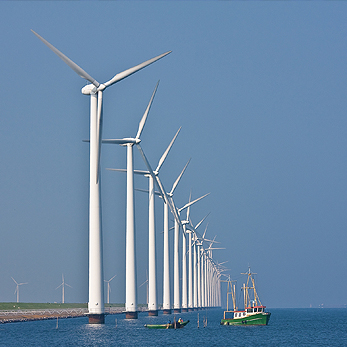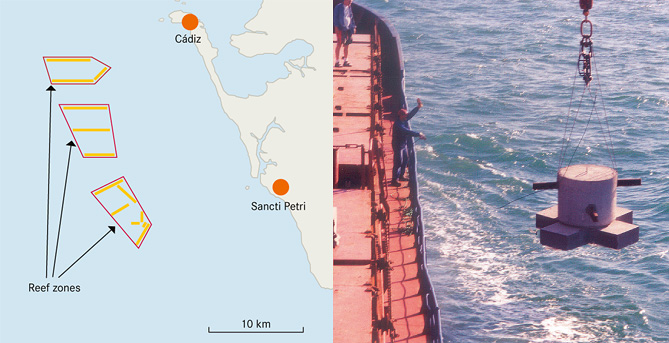There are around 50 artificial reefs in the OSPAR area. These are located at various sites within Regions I to IV. There are no artificial reefs in Region V. Most have been created in the past two decades and are purpose-built and made of concrete. Their purpose ranges from improving marine resources, compensating for, and protecting against, habitat loss, to providing recreational dive sites. Effects on the general biodiversity are unclear and opinions differ as to whether artificial reefs increase the productivity of fish species or whether they serve to concentrate them. Localised impacts on the marine environment are possible, for example, changes to waves and currents and displacement and changes to biological communities. Monitoring confirms that environmental impacts around artificial reefs are local and of limited intensity.
The design, choice of material and placement of artificial reefs in the OSPAR area are mostly subject to national authorisation, supported by EIAs. OSPAR has developed guidelines for artificial reefs that are specifically built for protecting, regenerating, concentrating and/or increasing the production of living marine resources. These recognise that negative impacts are possible at the local scale. The United Nations Environment Programme (UNEP) and the London Convention have prepared guidelines covering artificial reefs built for a wider range of purposes.
Because most of the impacts from artificial reefs are relatively local, as long as there is not a massive increase in the number of reefs and the OSPAR, UNEP and London Convention guidelines are followed, the development of artificial reefs is not expected to have major negative effects in the OSPAR area. However, monitoring the extent of this activity will assist further consideration of its impacts. To facilitate this, OSPAR should establish an inventory of artificial reefs.


